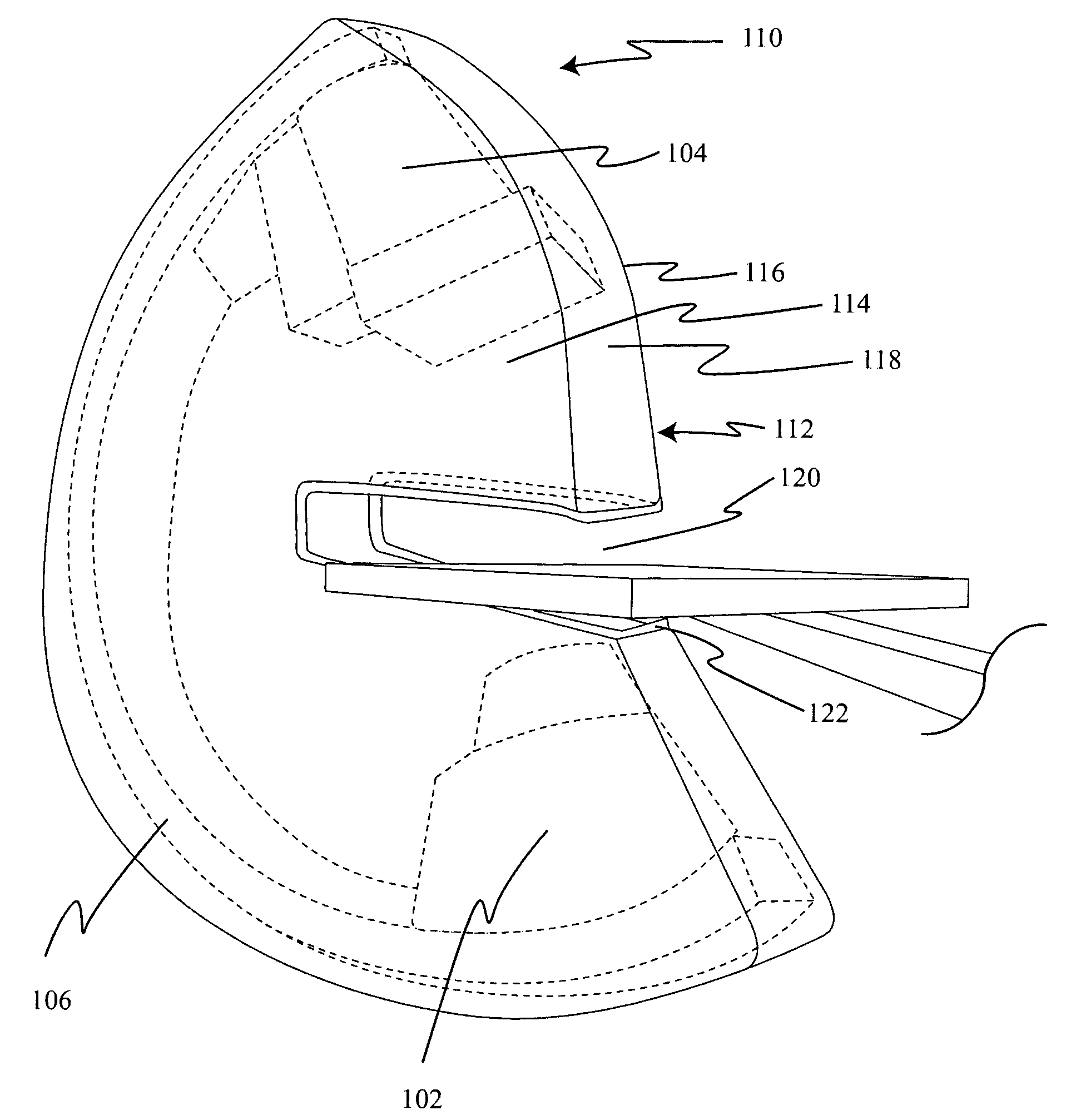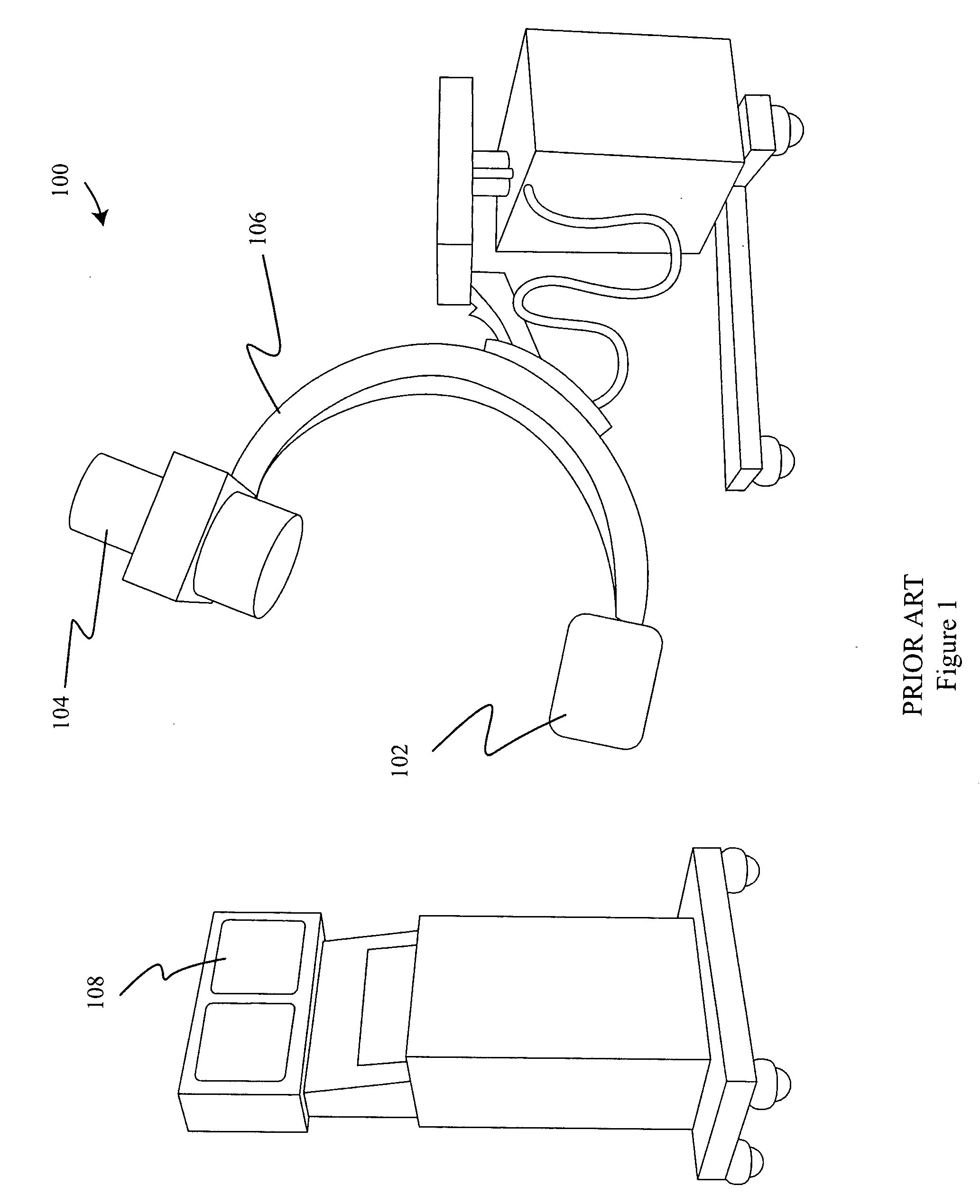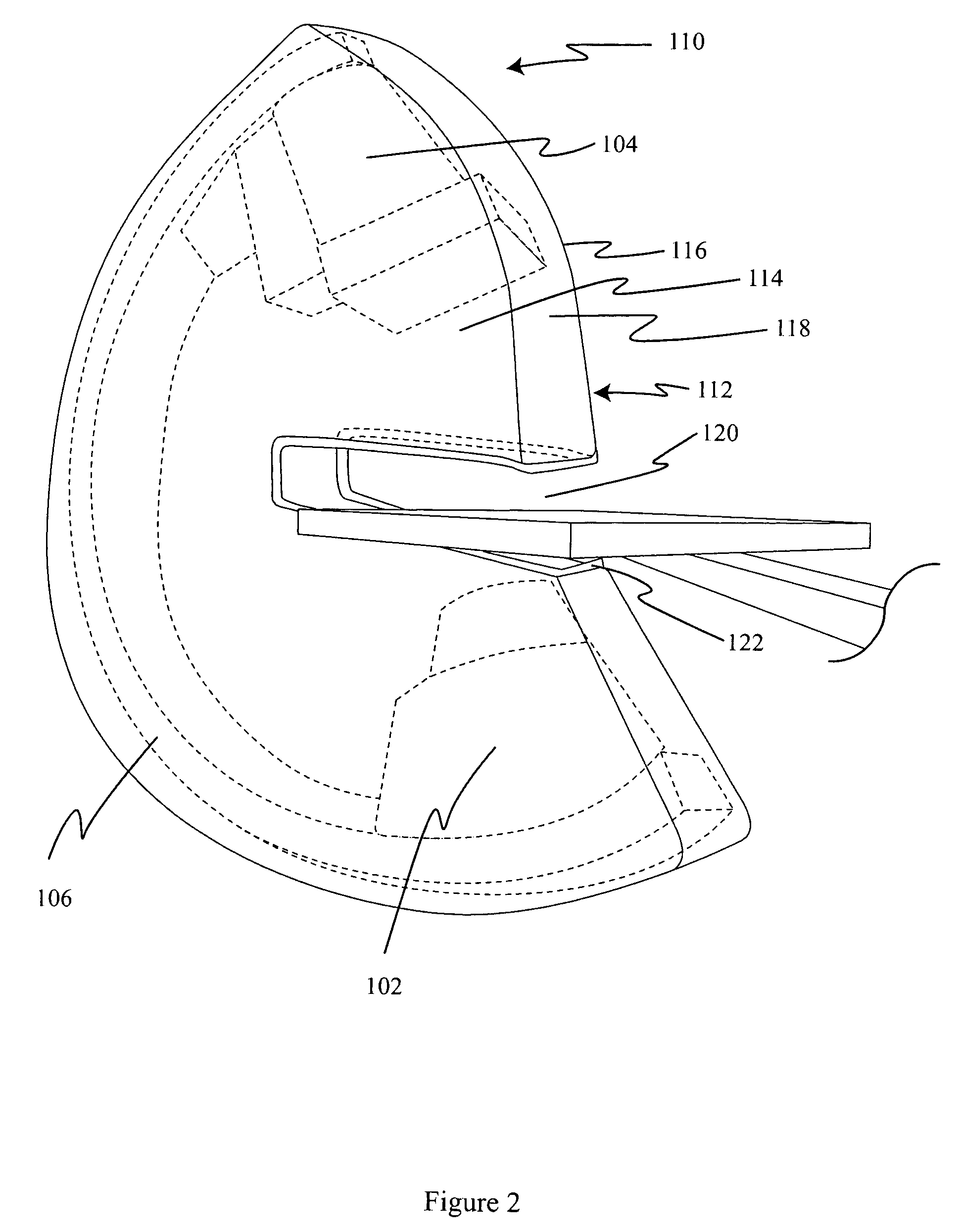Fluoroscopy operator protection device
a fluoroscopic operator and protection device technology, applied in the direction of x-ray tubes, patient positioning for diagnostics, applications, etc., can solve the problems of many life-saving interventional procedures that cannot be carried out, exposure of patient and attendant medical personnel to potentially harmful x-ray radiation, and significant doses of x-ray radiation for medical personnel involved in fluoroscopic imaging
- Summary
- Abstract
- Description
- Claims
- Application Information
AI Technical Summary
Benefits of technology
Problems solved by technology
Method used
Image
Examples
Embodiment Construction
[0039]FIG. 1 illustrates a prior art C-arm fluoroscopy system 100. The fluoroscope 100 includes an X-ray source 102 and an image intensifier 104 mounted on opposite ends of a C-arm 106. The C-arm 106 may be mounted on a mobile base with wheels, as shown, or it may be mounted via a support arm to the floor or the ceiling of the fluoroscopy suite. In use, the X-ray source 102 and the image intensifier 104 are placed on opposite sides of the portion of the patient's body to be imaged. The X-ray source 102 directs an X-ray beam through the patient's body toward the image intensifier 104, which captures the X-ray image and displays it on a monitor 108 in real time. Often, the X-ray source 102 is positioned below the patient and the image intensifier 104 is positioned above as shown, however for some applications these positions may be reversed or the C-arm 106 may be positioned horizontally or at an oblique angle. The system may also include electronic memory for storing and replaying fl...
PUM
 Login to View More
Login to View More Abstract
Description
Claims
Application Information
 Login to View More
Login to View More - R&D
- Intellectual Property
- Life Sciences
- Materials
- Tech Scout
- Unparalleled Data Quality
- Higher Quality Content
- 60% Fewer Hallucinations
Browse by: Latest US Patents, China's latest patents, Technical Efficacy Thesaurus, Application Domain, Technology Topic, Popular Technical Reports.
© 2025 PatSnap. All rights reserved.Legal|Privacy policy|Modern Slavery Act Transparency Statement|Sitemap|About US| Contact US: help@patsnap.com



